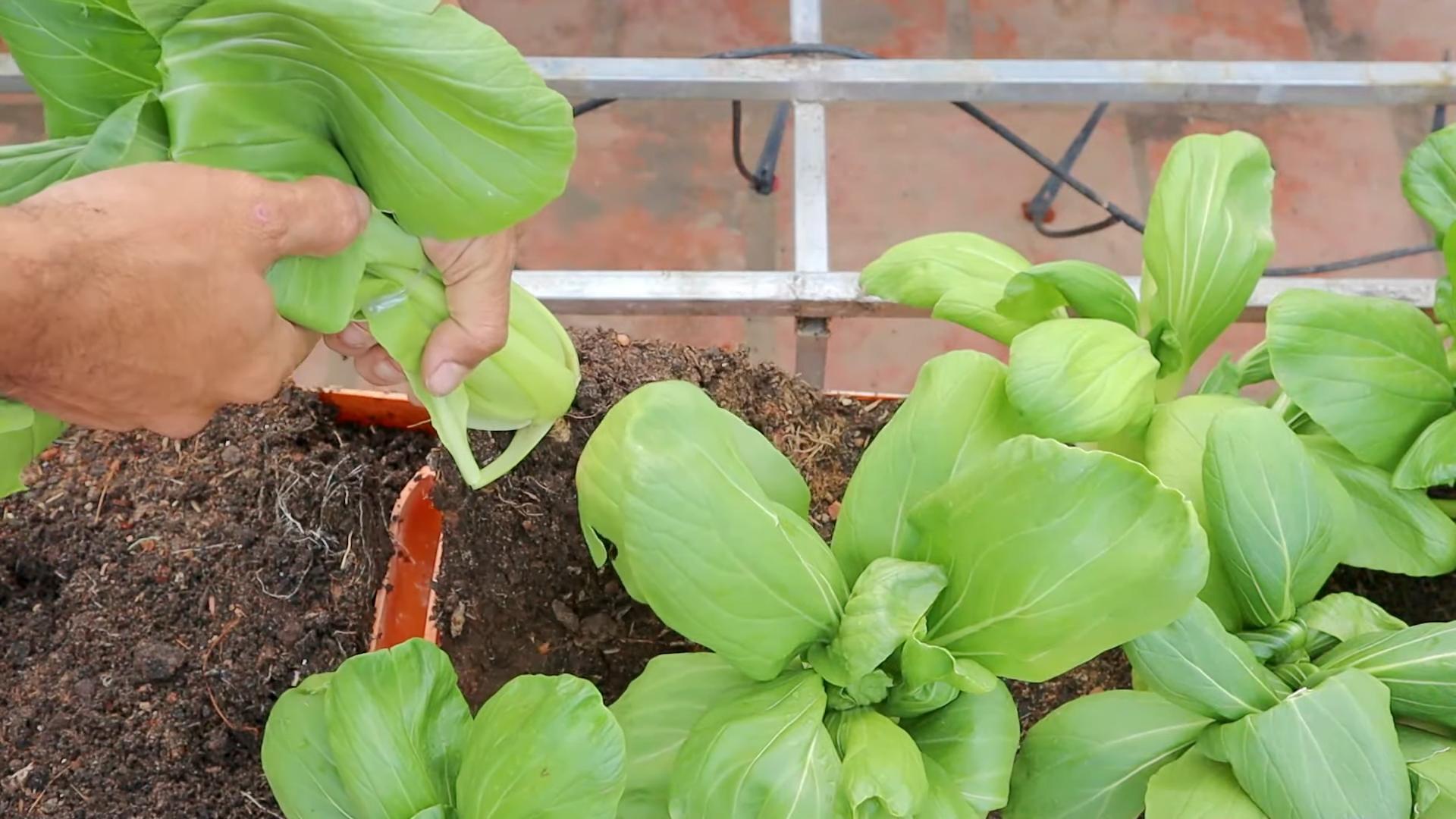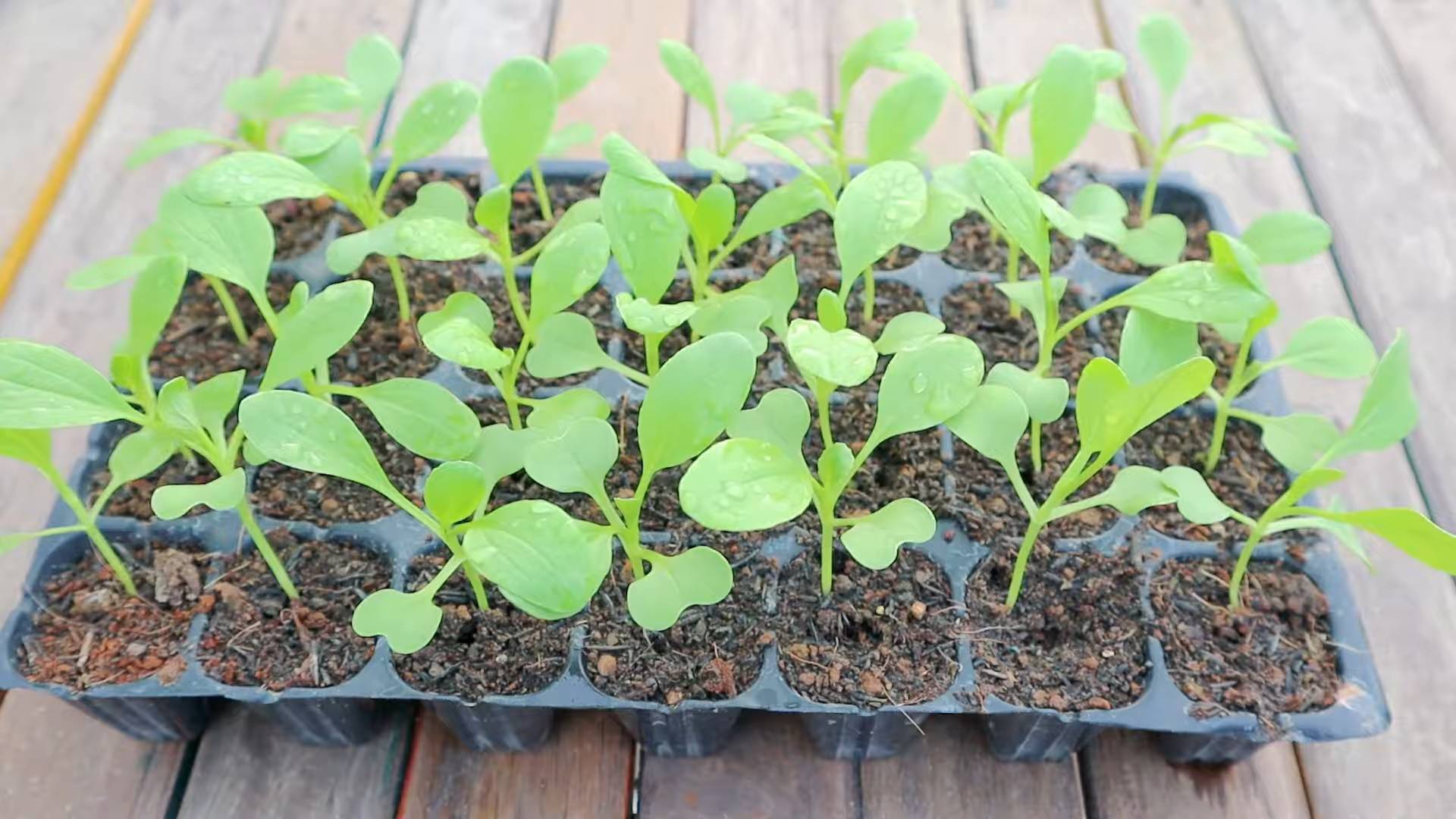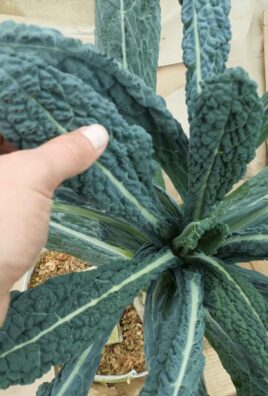Growing Bok Choy Indoors might seem like a challenge reserved for seasoned gardeners, but trust me, it’s easier than you think! Have you ever craved a fresh, crisp stir-fry in the middle of winter, only to be disappointed by the wilted, overpriced bok choy at the grocery store? I have! That’s why I dove headfirst into the world of indoor gardening, and let me tell you, the results have been delicious.
Bok choy, also known as pak choi, has been a staple in Asian cuisine for centuries, with roots tracing back to ancient China. Its mild, slightly sweet flavor and satisfying crunch make it incredibly versatile. But beyond its culinary appeal, growing your own bok choy offers a sense of connection to nature and a rewarding feeling of self-sufficiency.
In today’s fast-paced world, finding moments of tranquility and control can be difficult. Growing Bok Choy Indoors provides a therapeutic escape, allowing you to nurture life and witness the magic of growth firsthand. Plus, you’ll have a constant supply of fresh, organic greens right at your fingertips! This DIY guide will walk you through every step, from choosing the right container to harvesting your bountiful crop. Get ready to transform your windowsill into a mini-farm and enjoy the satisfaction of growing your own delicious bok choy, no matter the season!

Growing Bok Choy Indoors: A Beginner’s Guide
Hey there, fellow plant enthusiasts! Ever thought about growing your own fresh, crisp bok choy right in your kitchen? It’s easier than you might think, and trust me, nothing beats the flavor of homegrown veggies. I’m going to walk you through everything you need to know to successfully cultivate bok choy indoors, from seed to harvest. Let’s get started!
Choosing the Right Bok Choy Variety
First things first, let’s talk about bok choy varieties. While most bok choy will grow indoors, some are better suited for container gardening than others.
* Dwarf Varieties: These are your best bet! They stay compact, making them perfect for indoor spaces. Look for names like ‘Toy Choy,’ ‘Baby Bok Choy,’ or ‘Shanghai Green.’
* Bolt-Resistant Varieties: “Bolting” means the plant prematurely goes to seed, which can make the leaves bitter. Choosing a bolt-resistant variety will give you a longer harvest window.
* Consider Taste Preferences: Do you prefer a mild flavor or something a bit more peppery? Research different varieties to find one that suits your taste buds.
Gathering Your Supplies
Okay, now that we’ve picked our bok choy, let’s gather our supplies. Here’s what you’ll need:
* Seeds: Obviously! Purchase high-quality seeds from a reputable source.
* Containers: Choose containers that are at least 6 inches deep and wide. Good drainage is crucial, so make sure your containers have drainage holes. I personally love using recycled plastic containers or even old buckets with holes drilled in the bottom.
* Potting Mix: Don’t use garden soil! It’s too heavy and doesn’t drain well. Opt for a lightweight, well-draining potting mix specifically formulated for containers.
* Grow Lights: Bok choy needs plenty of light, especially indoors. A good set of grow lights is essential. I recommend LED grow lights, as they’re energy-efficient and don’t produce too much heat.
* Watering Can or Spray Bottle: For gentle watering.
* Fertilizer: A balanced liquid fertilizer will help your bok choy thrive.
* Optional: Seed Starting Tray and Dome: If you prefer to start your seeds indoors before transplanting.
Planting Your Bok Choy
Alright, time to get our hands dirty! Here’s how to plant your bok choy:
1. Starting Seeds Indoors (Optional): If you’re starting seeds indoors, fill your seed starting tray with potting mix. Moisten the soil and sow the seeds about ¼ inch deep. Cover the tray with a dome to create a humid environment. Place the tray under your grow lights and keep the soil consistently moist. Seeds should germinate in about 5-7 days.
2. Direct Sowing: If you’re direct sowing into your containers, fill the containers with potting mix, leaving about an inch of space at the top. Moisten the soil. Sow the seeds about ½ inch deep and 1-2 inches apart. Gently cover the seeds with soil.
3. Watering After Planting: Water gently after planting, making sure not to dislodge the seeds.
4. Placement Under Grow Lights: Place your containers under your grow lights. Position the lights about 6-12 inches above the soil surface.
Caring for Your Bok Choy
Now comes the fun part – nurturing your little bok choy plants!
1. Light: Bok choy needs at least 6 hours of light per day. If you’re using grow lights, aim for 12-14 hours of light per day.
2. Watering: Keep the soil consistently moist, but not soggy. Water when the top inch of soil feels dry to the touch. Avoid overwatering, as this can lead to root rot.
3. Fertilizing: Feed your bok choy with a balanced liquid fertilizer every 2-3 weeks. Follow the instructions on the fertilizer label.
4. Temperature: Bok choy prefers cooler temperatures, ideally between 60-70°F (15-21°C). Avoid placing your plants near heat sources.
5. Thinning: Once your seedlings have a few true leaves, thin them out so that they are about 4-6 inches apart. This will give them enough space to grow. You can eat the thinned seedlings!
6. Air Circulation: Good air circulation is important to prevent fungal diseases. Make sure your plants have enough space between them and that there’s good airflow in the room. A small fan can help.
7. Pest Control: Keep an eye out for pests like aphids, slugs, and cabbage worms. If you spot any pests, you can try hand-picking them off or using an organic insecticide like neem oil.
Troubleshooting Common Problems
Even with the best care, you might encounter a few problems along the way. Here are some common issues and how to address them:
* Yellowing Leaves: This could be a sign of overwatering, underwatering, or nutrient deficiency. Check the soil moisture and adjust your watering accordingly. If the soil is consistently moist, you might be overwatering. If the soil is dry, you need to water more often. If the leaves are yellowing all over, it could be a nutrient deficiency. Try fertilizing with a balanced liquid fertilizer.
* Leggy Growth: This means your plants aren’t getting enough light. Move them closer to your grow lights or increase the amount of time they’re under the lights.
* Bolting: As mentioned earlier, bolting is when the plant prematurely goes to seed. This can be caused by stress, such as high temperatures or inconsistent watering. Choose a bolt-resistant variety and try to keep the temperature consistent.
* Pests: Aphids, slugs, and cabbage worms can all attack bok choy. Inspect your plants regularly and take action as soon as you spot any pests.
Harvesting Your Bok Choy
The moment we’ve been waiting for! You can start harvesting your bok choy when the leaves are about 6-8 inches long.
1. Harvesting Individual Leaves: You can harvest individual leaves as needed, starting with the outer leaves. This will allow the plant to continue growing and producing new leaves.
2. Harvesting the Whole Plant: If you want to harvest the whole plant, simply cut it off at the base with a sharp knife.
3. Washing and Storing: Wash your harvested bok choy thoroughly and store it in the refrigerator in a plastic bag. It should last for about a week.
Enjoying Your Homegrown Bok Choy
Now that you’ve harvested your bok choy, it’s time to enjoy the fruits (or rather, vegetables) of your labor! Bok choy is incredibly versatile and can be used in a variety of dishes.
* Stir-fries: Bok choy is a classic ingredient in stir-fries. It adds a delicious crunch and mild flavor.
* Soups: Add bok choy to soups for a boost of nutrients and flavor.
* Salads: Young, tender bok choy leaves can be used in salads.
* Steaming: Steamed bok choy is a simple and healthy side dish.
* Sautéing: Sauté bok choy with garlic and ginger for a flavorful side dish.
Extra Tips for Success
Here are a few extra tips to help you succeed with growing bok choy indoors:
* Rotate Your Crops: If you’re growing bok choy in the same containers year after year, rotate your crops to prevent soilborne diseases.
* Use Companion Planting: Companion planting can help deter pests and improve the health of your plants. Good companion plants for bok choy include garlic, onions, and marigolds.
* Don’t Give Up! Growing anything takes practice. Don’t be discouraged if you don’t succeed right away. Keep learning and experimenting, and you’ll eventually get the hang of it.
Growing bok choy indoors is a rewarding experience. With a little bit of care and attention, you can enjoy fresh, homegrown bok choy all year round. Happy gardening!

Conclusion
So, there you have it! Growing bok choy indoors is not only achievable but also incredibly rewarding. From seed to stir-fry, you can enjoy fresh, crisp, and nutrient-packed bok choy right from your own home, regardless of the season. This DIY trick transforms any sunny windowsill or corner with grow lights into a miniature, edible garden.
Why is this a must-try? Because it offers a level of freshness and control you simply can’t get from store-bought produce. You know exactly what went into growing your bok choy – no pesticides, no long transportation times, just pure, homegrown goodness. Plus, it’s a fantastic way to connect with nature, even when you’re stuck indoors. The simple act of nurturing a plant from seed to harvest can be incredibly therapeutic and satisfying.
But the benefits don’t stop there. Growing your own bok choy indoors is also a sustainable choice. You’re reducing your carbon footprint by eliminating the need for transportation and packaging associated with commercially grown produce. You’re also minimizing food waste, as you can harvest only what you need, when you need it.
Looking for variations? Experiment with different varieties of bok choy! Baby bok choy is perfect for quick stir-fries, while larger varieties can be used in soups and stews. You can also try growing other leafy greens alongside your bok choy, such as spinach or lettuce, to create a diverse and vibrant indoor garden. Consider using different types of containers, from traditional pots to repurposed containers, to add a touch of personality to your indoor garden. Hydroponic systems can also be used for growing bok choy indoors, offering a soilless and efficient alternative.
Don’t be intimidated by the thought of indoor gardening. Growing bok choy indoors is surprisingly easy, even for beginners. With a little bit of attention and the right conditions, you’ll be harvesting your own delicious bok choy in no time.
We wholeheartedly encourage you to give this DIY trick a try. Imagine the satisfaction of serving a meal made with bok choy you grew yourself! It’s a conversation starter, a source of pride, and a delicious way to add more greens to your diet.
Once you’ve tried growing bok choy indoors, we’d love to hear about your experience. Share your tips, tricks, and photos in the comments below. Let’s create a community of indoor gardeners and inspire others to embrace the joy of growing their own food. What challenges did you face, and how did you overcome them? What varieties did you try, and which ones were your favorites? Your insights can help others succeed in their own indoor gardening endeavors. So, grab some seeds, find a sunny spot, and get ready to enjoy the delicious rewards of growing bok choy indoors!
Frequently Asked Questions (FAQ)
What are the best varieties of bok choy to grow indoors?
While most bok choy varieties can be grown indoors, some are better suited for container gardening due to their size and growth habits. Baby bok choy varieties, such as ‘Shanghai Green’ and ‘Mei Qing Choi,’ are excellent choices because they mature quickly and stay relatively compact. These varieties are also less prone to bolting (going to seed) in warmer indoor temperatures. Other suitable varieties include ‘Joi Choi’ and ‘Toy Choi.’ When selecting seeds, look for varieties specifically labeled as “dwarf” or “compact” for the best results in limited space. Remember to check the seed packet for specific growing instructions and days to maturity.
How much light does bok choy need when grown indoors?
Bok choy requires at least 6 hours of direct sunlight per day to thrive. If you don’t have a south-facing window that provides sufficient sunlight, you’ll need to supplement with artificial grow lights. Fluorescent or LED grow lights are excellent options. Place the lights about 6-12 inches above the plants and keep them on for 12-14 hours per day. Monitor your plants closely for signs of insufficient light, such as leggy growth (long, thin stems) or pale leaves. Adjust the position of the lights or increase the duration of light exposure as needed. Remember that the intensity of light decreases with distance, so closer is generally better.
What type of soil is best for growing bok choy indoors?
Bok choy prefers well-draining, fertile soil with a slightly acidic to neutral pH (around 6.0 to 7.0). A good potting mix specifically formulated for vegetables is ideal. You can also create your own mix by combining equal parts of potting soil, compost, and perlite or vermiculite. Compost provides essential nutrients, while perlite or vermiculite improves drainage and aeration. Avoid using garden soil, as it can be too heavy and may contain pests or diseases. Before planting, moisten the soil thoroughly but avoid overwatering.
How often should I water my indoor bok choy plants?
Water your bok choy plants regularly, keeping the soil consistently moist but not waterlogged. Check the soil moisture level daily by sticking your finger about an inch into the soil. If the soil feels dry to the touch, it’s time to water. Water deeply, allowing excess water to drain out of the bottom of the pot. Avoid overhead watering, as this can increase the risk of fungal diseases. Instead, water at the base of the plant. During hot or dry periods, you may need to water more frequently.
How do I fertilize my indoor bok choy plants?
Bok choy is a heavy feeder and benefits from regular fertilization. Start fertilizing about two weeks after the seedlings emerge. Use a balanced liquid fertilizer diluted to half strength. Apply the fertilizer every two to three weeks, following the instructions on the fertilizer label. You can also use organic fertilizers, such as compost tea or fish emulsion. Avoid over-fertilizing, as this can lead to excessive leaf growth and reduced flavor.
What are some common pests and diseases that affect indoor bok choy?
Common pests that can affect indoor bok choy include aphids, spider mites, and whiteflies. Regularly inspect your plants for signs of infestation, such as small insects on the leaves or sticky residue. If you find pests, you can try washing them off with a strong stream of water or using insecticidal soap or neem oil. Common diseases that can affect bok choy include fungal diseases like powdery mildew and downy mildew. To prevent these diseases, ensure good air circulation around your plants and avoid overhead watering. If you notice signs of disease, remove the affected leaves and treat the plants with a fungicide.
How long does it take to grow bok choy indoors?
The time it takes to grow bok choy indoors depends on the variety and growing conditions. Generally, you can expect to harvest baby bok choy in about 30-45 days from planting. Larger varieties may take 50-60 days to mature. You can start harvesting the outer leaves as soon as they are large enough to eat, or you can harvest the entire plant at once.
Can I grow bok choy indoors year-round?
Yes, you can grow bok choy indoors year-round, provided you have adequate light and temperature control. Bok choy prefers temperatures between 60-70°F (15-21°C). If your indoor temperatures are too high, the plants may bolt. Use grow lights to supplement natural light during the winter months.
How do I harvest bok choy grown indoors?
You can harvest bok choy by either cutting off the outer leaves as needed or harvesting the entire plant at once. To harvest the outer leaves, use a sharp knife or scissors to cut the leaves near the base of the plant. To harvest the entire plant, cut the stem just above the soil line.
Can I regrow bok choy from the base?
Yes, you can regrow bok choy from the base. After harvesting the entire plant, leave about an inch of the stem and roots in the soil. Water regularly and keep the soil moist. New leaves should start to emerge within a few weeks. You can harvest these new leaves as they grow.




Leave a Comment